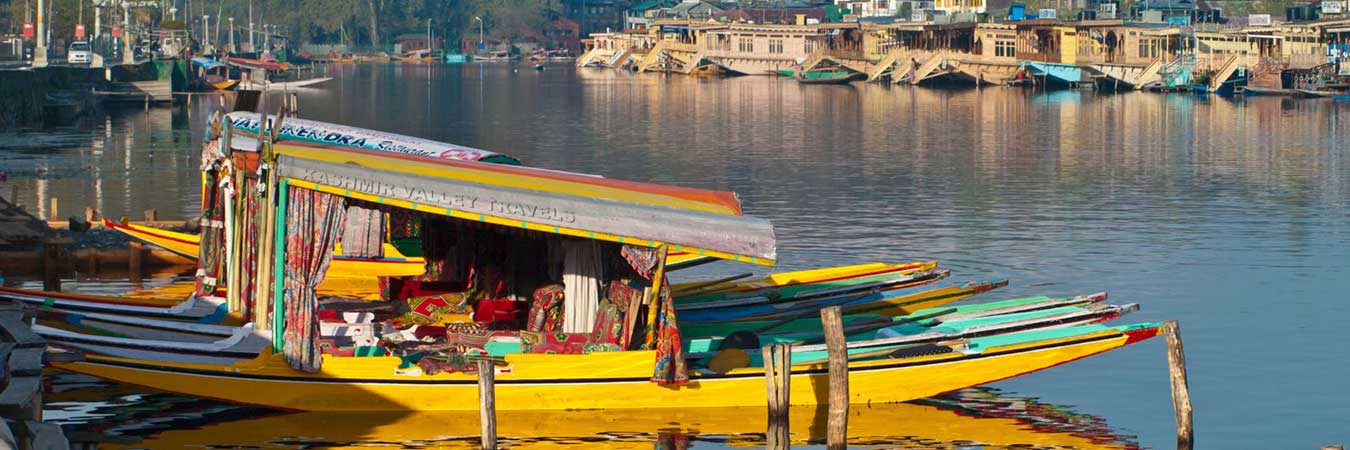
Visitors to Srinagar, in India’s Kashmir Valley, are often surprised to discover how broad the city’s heritage really is. Houseboats on Dal Lake, Mughal gardens and tulips are among the first things that come to mind. Yet, this belies the fact that Kashmir was ruled over thousands of years by kings of varied ethnicities and religions — Hindu, Buddhist, Muslim, Mughal, Afghan, Sikh, and Dogra — creating a very rich heritage that has evolved over time.
Let’s take a look.
Most remarkably, Srinagar’s origin can be traced as far back as the 3rd century BC, when Mauryan emperor Ashoka is said to have founded the city a short distance north of where it’s located today. He introduced Buddhism into the Kashmir Valley and it flourished there alongside Hinduism. Hindu rule predominated until the 14th century though, when the Muslim Sultanate was established and took over in Kashmir.
Islam and Sufi culture made its way to Kashmir from Central Asia through the ancient Silk Road trading route, with the mystical mountains holding special appeal to Sufi saints. Many prominent Sufis from Central Asia fled persecution by Mongol invaders and sought refuge in Kashmir during the Sultanate period. The Sufi-Islamic way of life complemented the Rishi tradition of Kashmiri Hindus, and it developed into a unique form of Kashmiri Sufism that incorporated local religious philosophies. Kashmir prospered under the Sultanate’s fair and strong administration too.
Mughal emperor Akbar conquered the region in the late 16th century, ending the Sultanate’s reign. Subsequent Mughal rule, which lasted almost 200 years, brought about profound changes to Kashmir’s culture, society and landscape. In the mid 19th century, the British gained control of Srinagar. The city was one of their favourite summer retreats and they commissioned the iconic houseboats as accommodations.
The different eras of rulers who made the Kashmir Valley part of their empires have contributed much to the distinctive architectural legacy and heritage in Srinagar. Evocative monuments, buildings, places of worship, and traditional arts and crafts reflect the life and times of the city’s inhabitants. We’ve curated six themed heritage trails to take you on a journey through each era and bring the magnificence of Srinagar’s past to life. The duration of each trail ranges from an hour and a half to three hours.
1. Medieval Heritage Trail

This walk goes through the atmospheric old downtown district of Shahar-i-Khaas bordering the Jhelum River. It starts on the left bank of the river at Pathar Masjid, a stately grey limestone Mughal-era mosque from the 17th century. Across Zaina Kadal Bridge, the Khanqah of Shah Hamadan is a prominent Sufi prayer hall that’s a masterpiece of woodwork carvings and intricate artwork. Follow the trail’s winding lanes past nostalgic vernacular style houses, and spice and dried fruit markets, to the 15th century Mazar-i-Salateen royal cemetery complex. The trail finishes at 14th century Jamia Masjid, Srinagar’s oldest and largest mosque.
2. Mughal Heritage Trail

On this walk, you’ll explore the walled city of Srinagar constructed by Emperor Akbar to the west of Dal Lake, below Hari Prabhat hill, in the 16th century. The trail commences at what’s believed to have been the main entrance gate, Kathi Darwaza. Inside the gate, there are a couple of mosque complexes to see before heading up to the 18th century Afghan fort complex on top of Hari Prabhat. The climb is worth it to be rewarded with a captivating vista of the lake and city below. The final destination on the trail is Badam Wari almond orchard, where you can relax amid the trees and admire Nigeen Lake. It’s spectacular in during full bloom in spring.
3. Jhelum Riverfront Heritage Trail
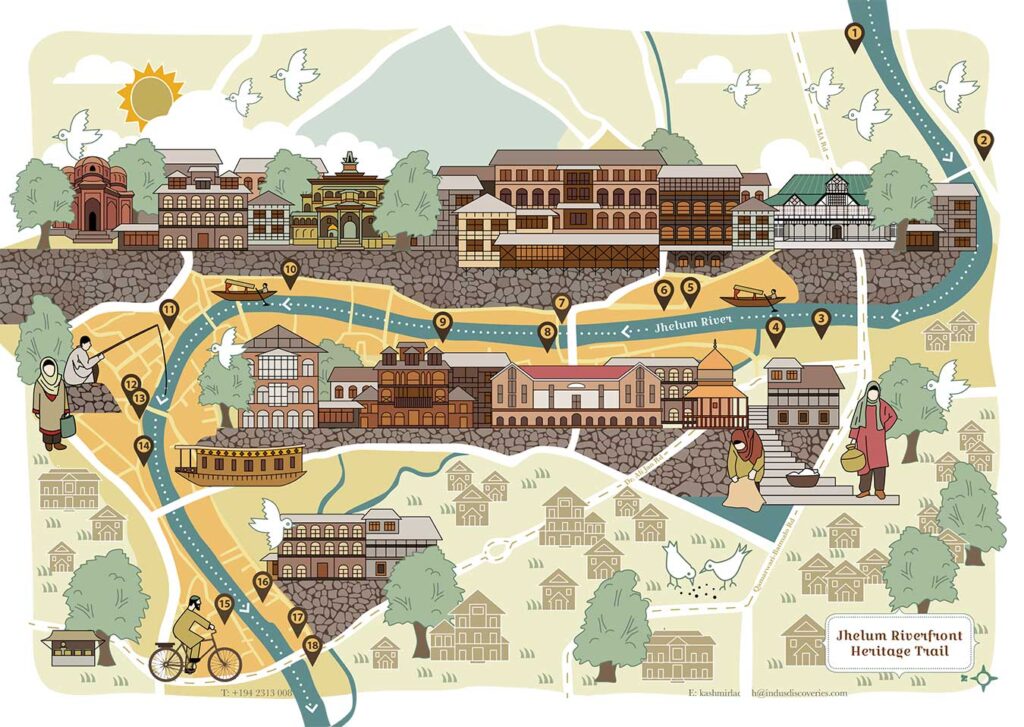
Development along the Jhelum River, which winds its way through the city, took place from the 14th century onwards. A boat ride along the river will give you an unforgettable perspective of the historic buildings, temples, mosques, palaces, and bridges that line the riverfront. Many have great cultural and architectural significance. The trail starts at Zero Bridge and ends at Safa Kadal.
4. Sufi Heritage Trail
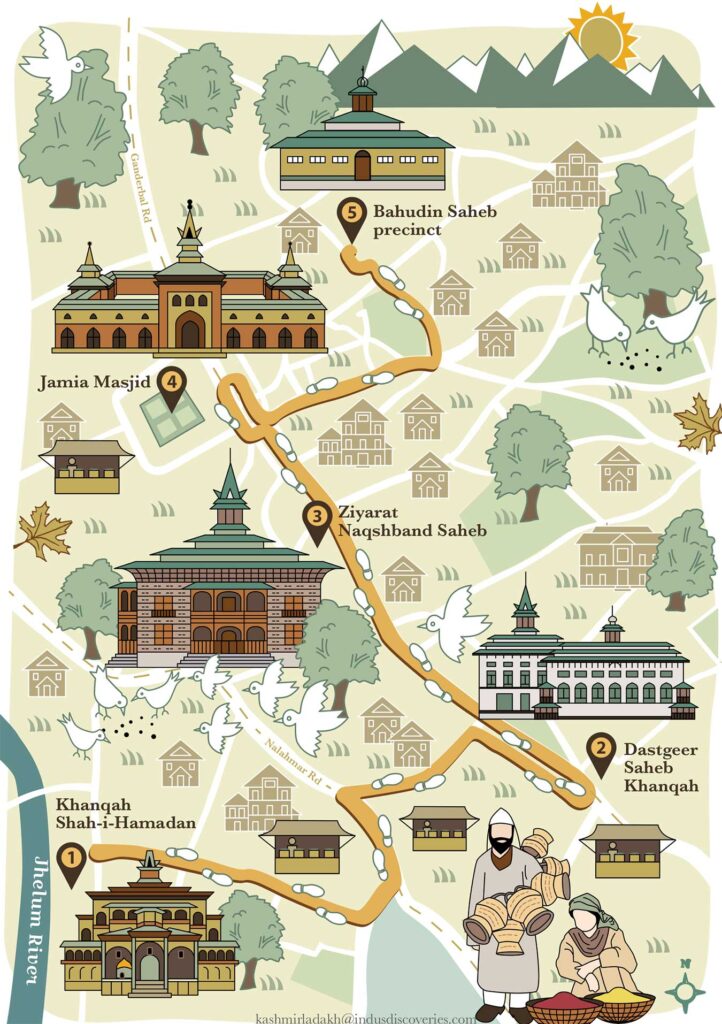
This trail also goes through Srinagar’s Shahar-i-Khaas district but focuses specifically on places of worship associated with notable Sufi saints. It begins at Khanqah of Shah Hamadan, dedicated Mir Syed Ali Hamdani who came from Iran in the 14th century and imparted the Sufi faith in Kashmir. Next is the ornate 200 year-old Khanqahof Dastgeer Saheb, of the Qadri orderof Sufi mysticism, which is frequented by both Hindus and Muslims. Nearby, Ziyarat Naqshband Saheb is named after a popular Sufi saint from Bukhara in Uzbekistan who founded the Naqshbandi Sufi order. The trail concludes to the north of Jamia Masjid at the precinct of Bahaudin Saheb.
5. Colonial Heritage Trail
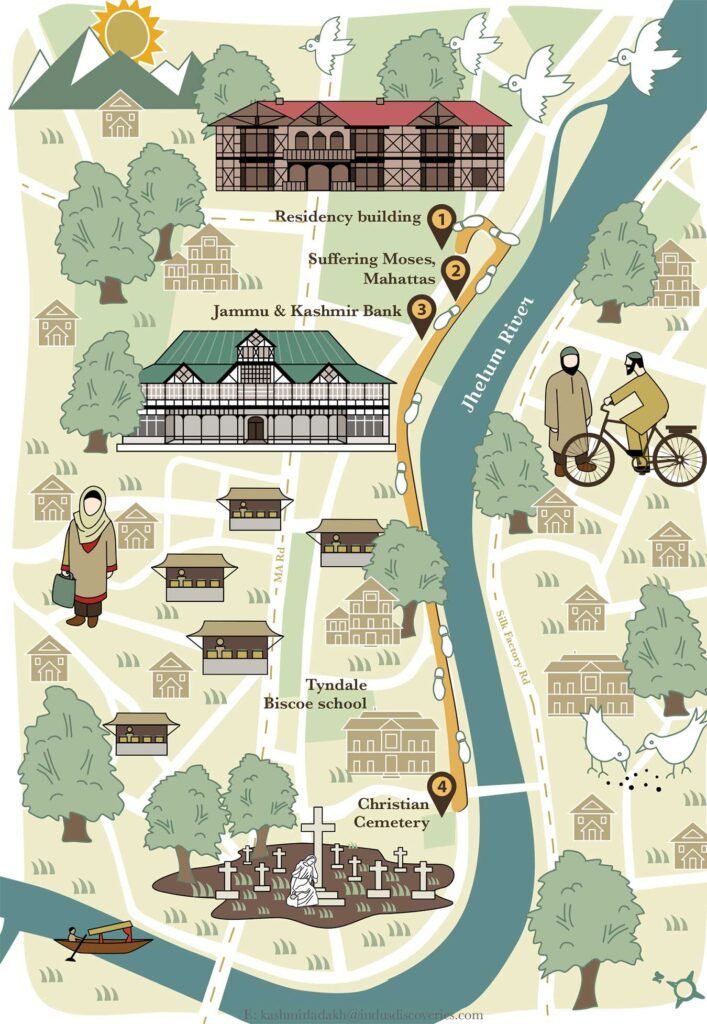
This British era influence can best be seen in the vicinity of what remains of Srinagar’s once fashionable shopping strip, The Bund. Of outstanding splendor is the British Residence Building, which now houses the state handicraft showroom. The walk commences there and extends along The Bund to the poignant Christian Cemetery.
6. Textiles, Arts & Crafts Heritage Trail
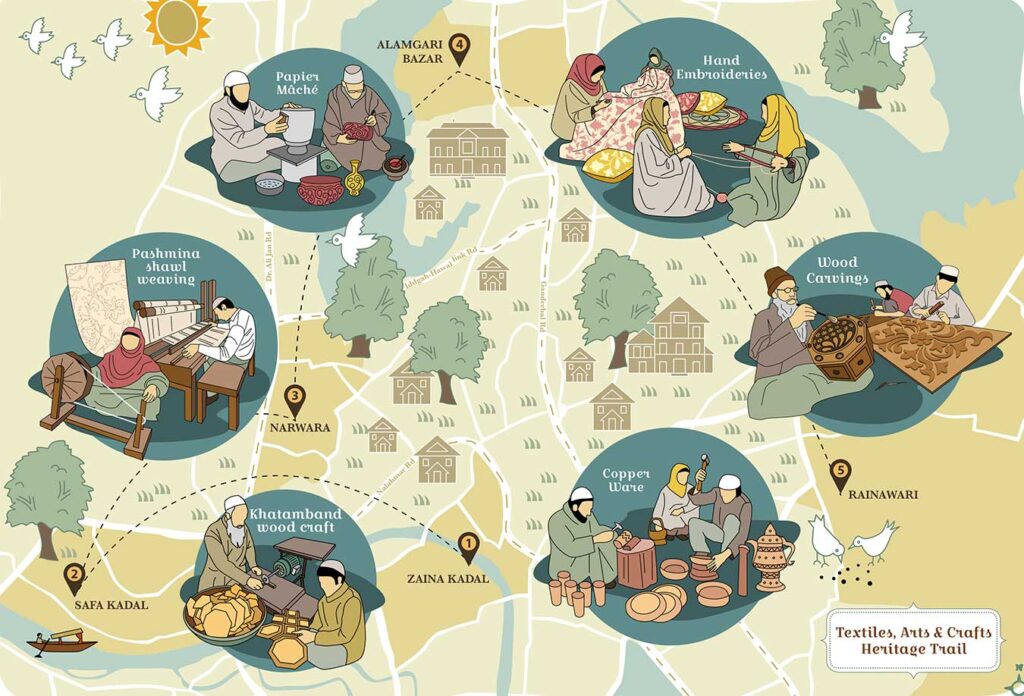
A visit to Srinagar wouldn’t be complete without appreciating the wonderful skills of the city’s artisans, including several age-old crafts that were brought to Kashmir from Persia. This trail covers workshops specialising in copperware, Khatamband woodwork, pashmina shawl weaving, papier-mâché, Kashida embroidery, and walnut wood carving.
As you can tell, Srinagar is a fascinating city indeed. Interested in learning more about these heritage trails? We welcome you to download our free brochure with maps.




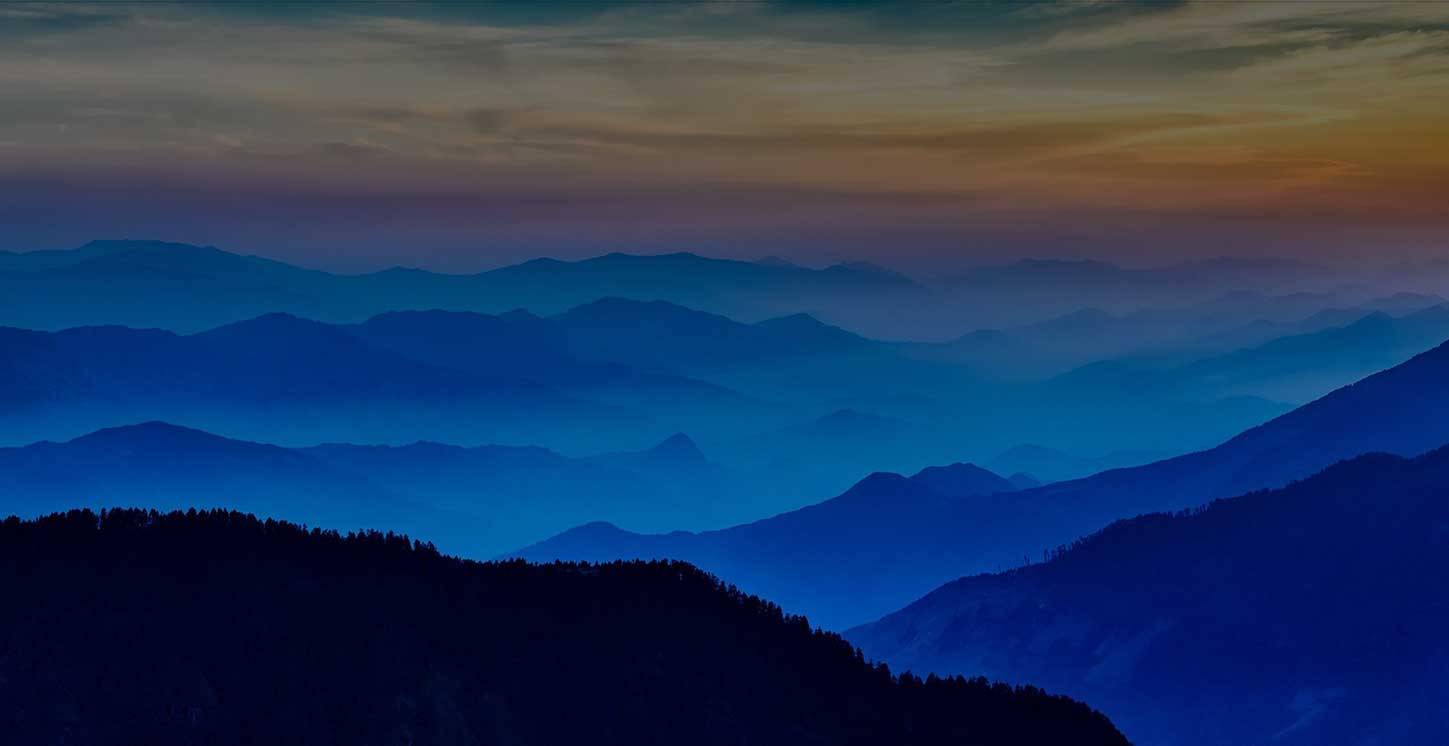
 +1-(765)-586-1210
+1-(765)-586-1210 +44-2030-2689-44
+44-2030-2689-44 +91 124 4361906
+91 124 4361906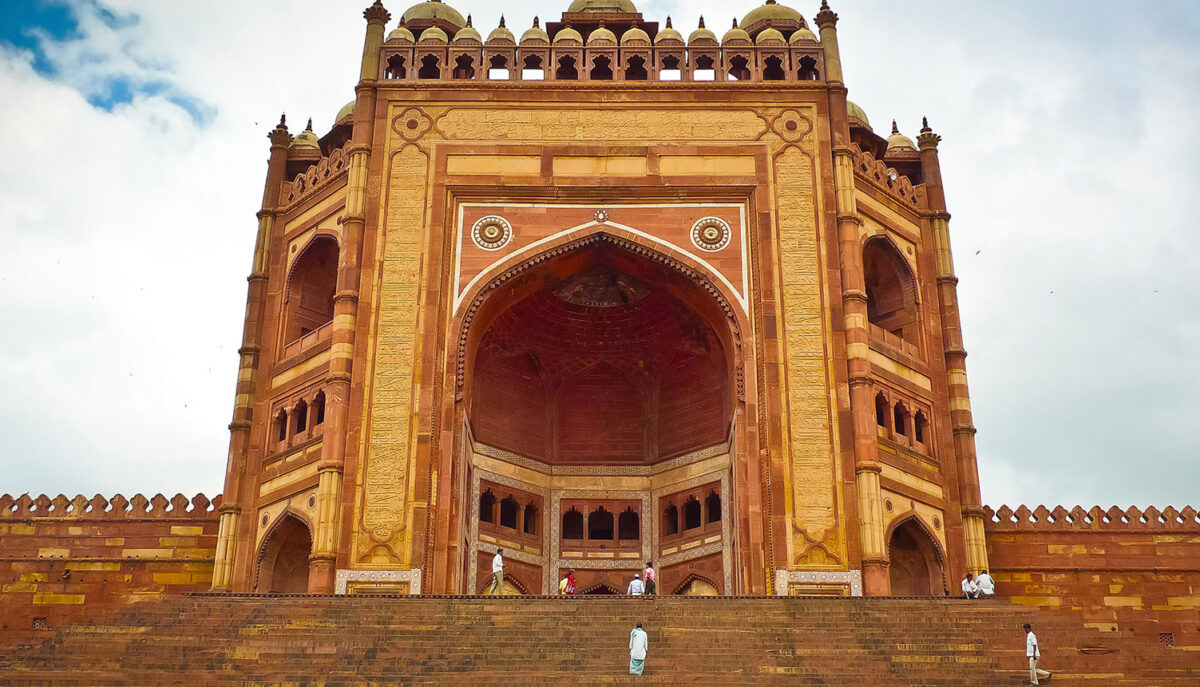
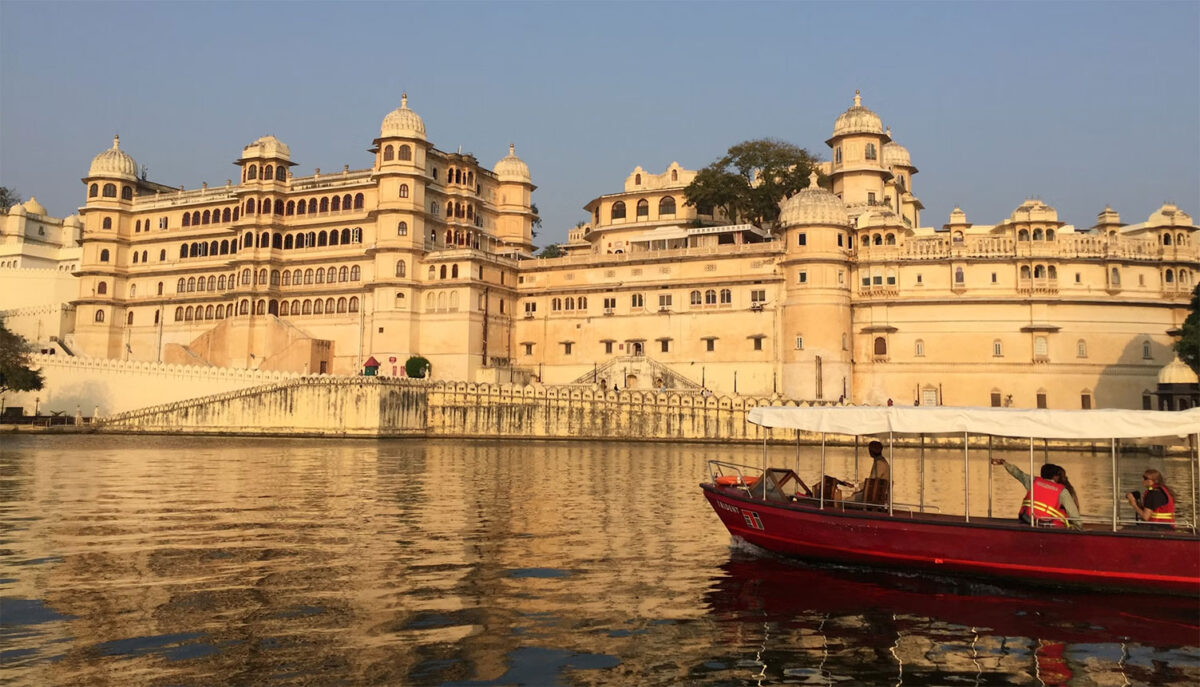





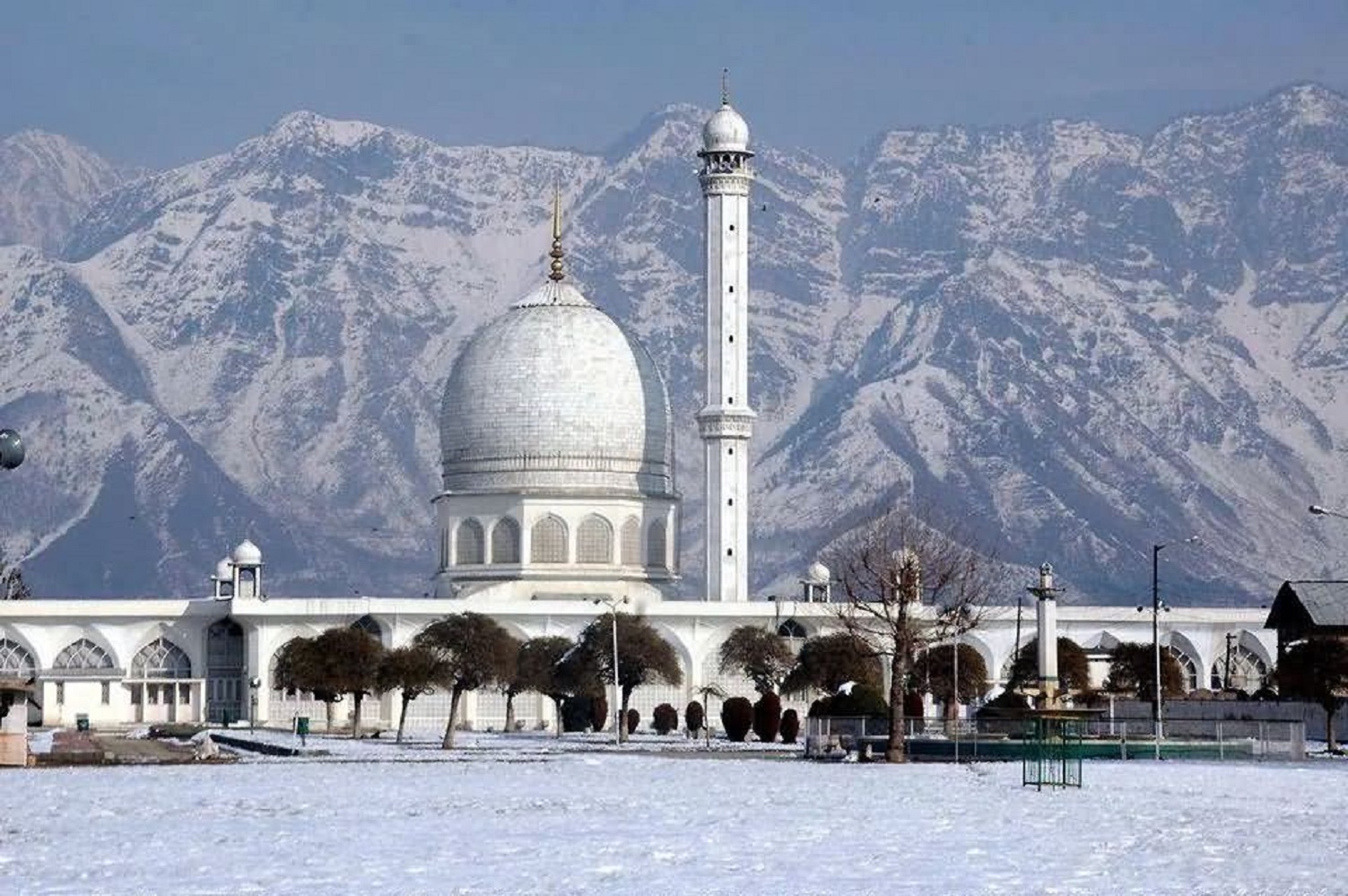
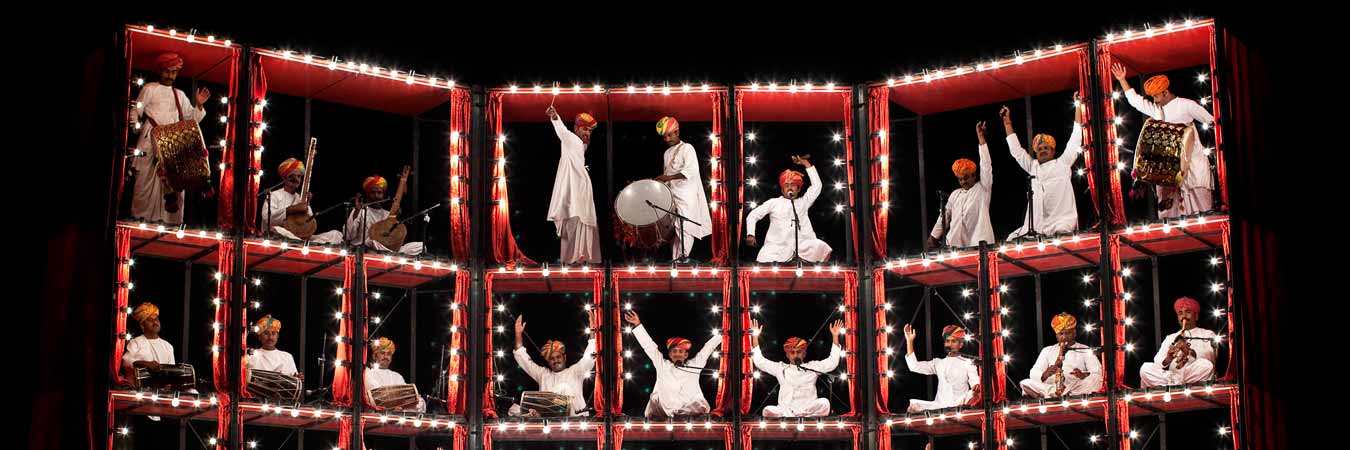
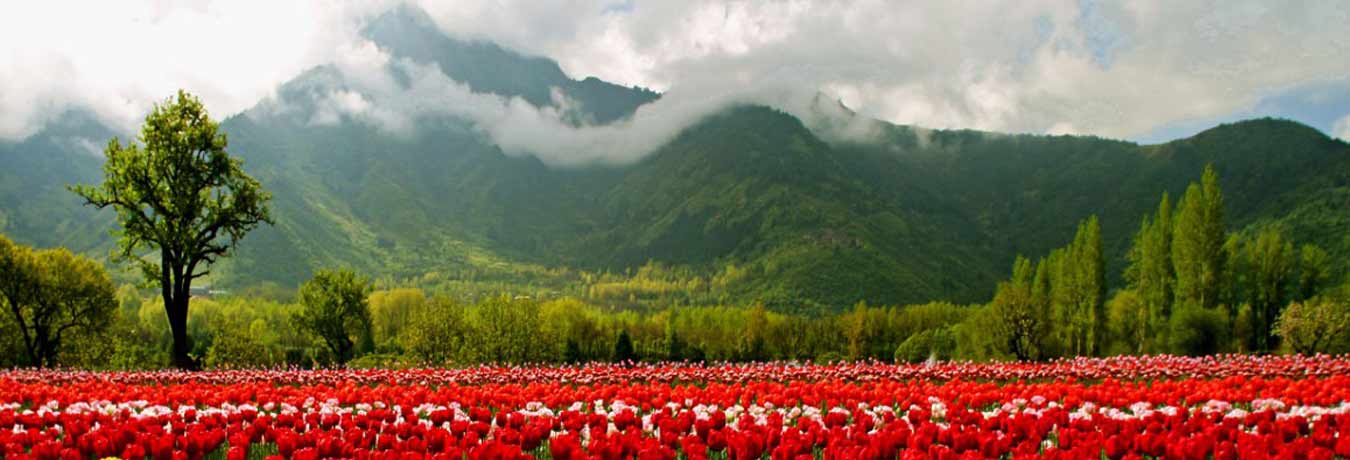


 +1-(765)-586-1210
+1-(765)-586-1210 +44-2030-2689-44
+44-2030-2689-44